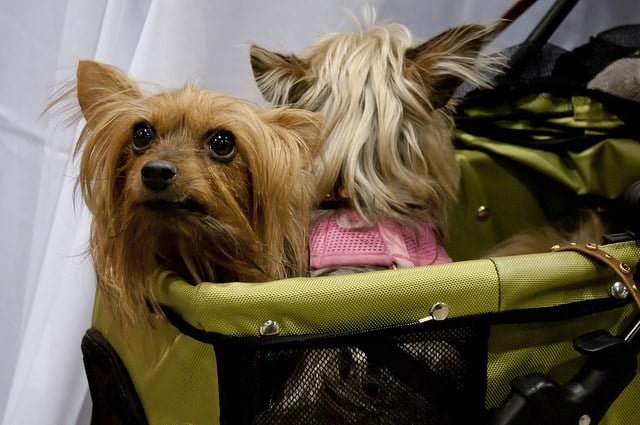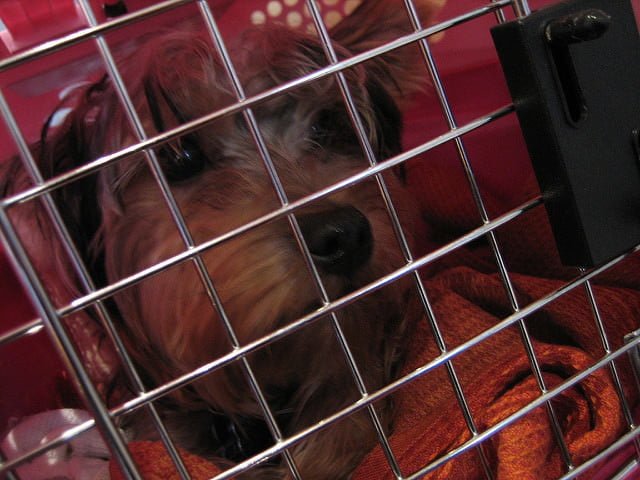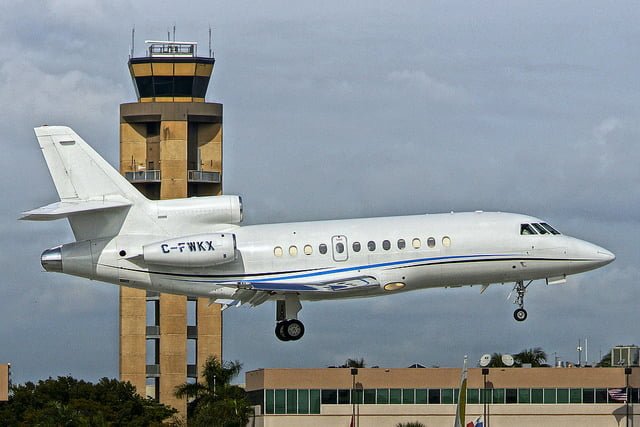Are you thinking about bringing your dog on your next vacation, but it’s too far to drive? Or maybe you’re moving across the country or the world. What are your options? With information from Trupanion, PetFriendly Travel, the Humane Society and USA Today, here are the 4 best ways to transport your dog.
1 – Bring your dog in the airplane cabin with you. Unfortunately, this option is only available for small dogs. The rules vary by airline, but generally, the dog plus the carrier must weigh less than 20 pounds and fit under the seat in front of you.
- Each flight is only allowed a certain number of pets, so let the airline know that you plan to bring one and ask about their rules.
- The major airlines that allow pets in the cabin (on select flight plans) are Air Canada, Alaska Airlines, American, Delta, Frontier, JetBlue, Southwest, and United. Fees vary but generally run between $50-125.
Some pets are lost, injured, or killed every year as a result of being flown cargo. Most airlines now forbid brachycephalic (snub-nosed) breeds since they are prone to breathing difficulties even in ideal conditions.
Flying a dog in cargo is always a risk, but if it’s unavoidable, here are some tips.
- Use direct flights.
- Notify the captain and at least one flight attendant that your dog is traveling in cargo. The captain may take special precautions.
- Choose flights based on season. Early morning or late evening flights are better in the summer; afternoon flights are better in the winter.
- Select a collar that can’t get snagged on anything. Attach a permanent ID with your name, home address, and telephone number and a travel ID with the address and phone number where you or a contact person can be reached.
- Attach a label to the carrier with your name, permanent address and phone number, final destination, and where you or a contact person can be reached.
- Ensure your dog’s nails are short to prevent them from getting hooked on anything.
- Give your pet at least a month to become familiar with the carrier to minimize their stress during travel.
- Don’t give your pet tranquilizers unless they’re prescribed by your vet for the flight
- Don’t feed your pet for 4 to 6 hours before the trip. Do give them small amounts of water. If possible, put ice cubes in the water tray inside your pet’s crate. (A full water bowl will spill.)Open the carrier as soon as you are in a safe place and examine your pet. If anything seems wrong, take them to a vet immediately. Get the results of the exam in writing, including the date and time.
Airlines that allow pets to fly in the cargo area include: Air Canada, Alaska Airlines, American, British Airways, Delta, Qantas, and United. Weight limits vary greatly, from a maximum weight of 31 pounds for the dog and the kennel on Delta to 150 pounds on Alaska Airlines. Fees range from about $100-200. Be sure to verify all rules and regulations with individual airlines.
3. Ship them via freight. There are many companies that specialize in transporting animals as freight, via either land or air.
Start with IPATA. The International Pet and Animal Transportation Association, founded in 1979, provides “professional, competent, and caring pet transportation relocation services throughout the USA and around the world.” Finding a company through IPATA is the best way to avoid a scam.
Expect to pay anywhere from several hundred to several thousand dollars depending on a variety of factors including distance, animal size, and whether your dog will be traveling via land or air.
4. Charter a flight. If you can afford it, this is by far the best option for traveling long distances with your pet. Many charter jet companies will allow pets on their flights (although usually they’re still required to be in a carrier for the entire flight). Since the cost is for the whole plane rather than per person or pet, it might not be as expensive as you expect if you have a large family or a bunch of friends traveling together.
Regardless of the transportation method, proof of current vaccinations and a health certificate from a vet dated within 10 days of the flight are usually required.
Recent Pet Posts
Blog Categories
Product categories
- Accessories (9)
- Chicken & Veggie Wraps (8)
- Grillers Jerky Tenders (4)
- Jerky Treats (10)
- Made in the USA (9)
- Non-Rawhide Treats (28)
- Beggar Bone (11)
- Bully Sticks (4)
- Butcher Bone (4)
- Cod Skin Fish Treats (3)
- Pork Skin Twists (2)
- Pressed Rawhide Bones & Rolls (16)
- Bones & Rolls (6)
- Pressed Rawhide Bulk (6)
- Twist Sticks (4)
- Savory Munchies (13)
- Supreme Bones & Rolls (48)
- American Rawhide Bulk (16)
- Rawhide Bones (14)
- Rawhide Chips (6)
- Rawhide Rolls & Sticks (12)
- Uncategorized (8)





